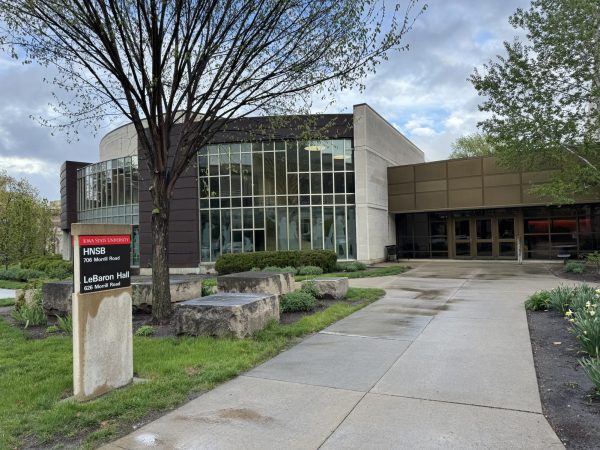Hong Kong leads global media, not Hollywood
October 11, 2007
Hollywood is not the leading media industry in the world. Believe it or not, that distinction belongs to Hong Kong.
Iowa State’s Technology, Globalization and Cultural Lecture Series brought in Michael Curtin, professor of media and cultural studies and director of global studies at University of Wisconsin-Madison, to speak Wednesday night on “Global Screen Industries.”
Curtin has written several books on the subject including his most recent addition, “Playing to the World’s Biggest Audience: The Globalization of the Chinese Film Industry.”
Covering the national and global media screen industries, Curtin’s lecture refuted the thoughts that Hollywood is the main source of media outlets to the world, which was a surprise for many of the students in attendance.
“Think of it spacially – the improvement in efficiency, and rearranging space to make things more efficient,” Curtin said.
Curtin said industries need to capitalize space and seek to get products out as far as possible.
“[The media must] create relationships to other places, absorb things from afar and that are related to other places,” Curtin said. “It’s an organization of time and space.”
Curtin said the trajectories of curtain migration included talent, defined as a distinctive resource of media biz.
“They are driven by trying to refine and create something pleasing to us,” Curtin said. “Creative talent tends to seek out other creative talent and to be with others of their kind.”
Curtin said this is a sociocultural variation. Global media screen industries share certain cultural myths and certain places get known as “avant-garde.” Americans perceive certain places as being the main talent movements. Curtin talked about how these cultures and differences need to mesh in the global market.
Curtin said American audiences see themselves as part of a group and model in patterns in which media circulates. But in reality, there are more Chinese filmgoers than in all the U.S. and Europe combined, and thinking is on a basis of cultural policies. This is because Hong Kong had a sense of leadership starting in the 1960s and became orientated to commercial audiences changing to what Curtin referred to as a “cosmopolitan center.” Bombay, India, is much like Hong Kong as a cultural cosmopolitan center because of the influx of Indian filmmakers from other parts of India.
Curtin said service centers make it cheaper to make films because of the currency exchange rates in places where filmmakers make movies and provide services to Hollywood.
“Media are like parks,” Curtin said. “You can’t have a community without local media, and they make places worth living and more valuable.”
The room was filled with students required to attend for the Mechanical Engineering 484 class. Robert Reischl, graduate student in business administration, said the most important point to Curtin’s lecture was that “media centers’ location[s] are determined by a variety of factors and are in no way permanent.”
Robert Parker, senior in mechanical engineering, saw a different important point.
“Hollywood is not the only media center in the world and will not be a media center forever,” Parker said. “Major media centers move and change and are now located in Hong Kong and Bombay, among others.”
















